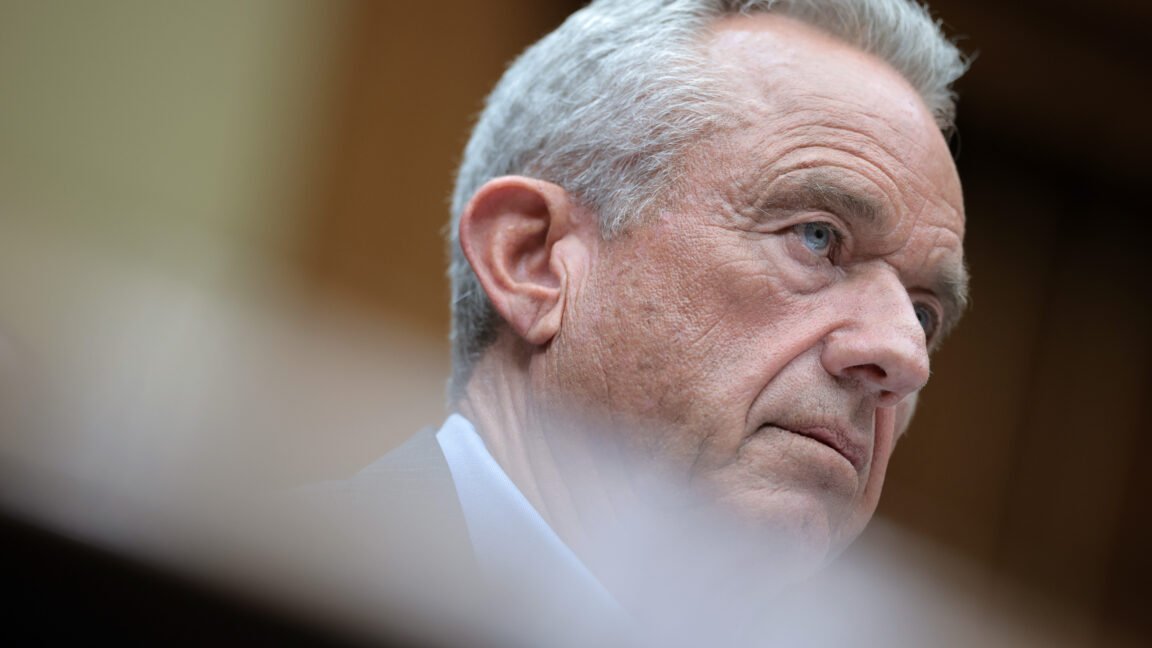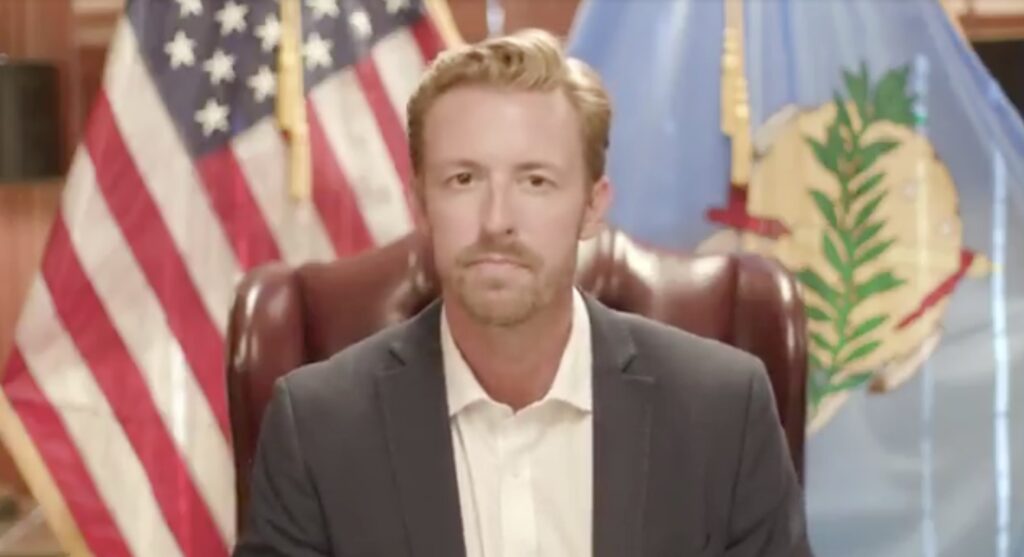Read more of this story at Slashdot.
Vaccination rates among the country's kindergartners have fallen once again, with coverage of the measles, mumps, and rubella (MMR) vaccination dropping from 92.7 percent in the 2023–2024 school year to 92.5 percent in 2024–2025. The percentage changes are small across the board, but they represent thousands of children and an ongoing downward trend that makes the country more vulnerable to outbreaks.
In the latest school year, an estimated 286,000 young children were not fully protected against measles. At the same time, the country has seen numerous explosive measles outbreaks, with case counts in 2025 already higher than any other year since the highly infectious disease was declared eliminated in 2000. In fact, the case count is at a 33-year high.
The latest small decline is one in a series that is eroding the nation's ability to keep bygone infectious diseases at bay. In the 2019–2020 school year, 95 percent of kindergartners were protected against measles and other serious childhood diseases, such as polio. That 95 percent coverage is the target that health experts say prevents an infectious disease from spreading in a community. But amid the pandemic, vaccination rates fell, dropping to 93.9 percent MMR coverage in the 2020–2021 year, and have kept creeping downward.
Anti-vaccine era
At the height of the pandemic, some slippage in immunization coverage could be blamed on disrupted access. But anti-vaccine sentiments and misinformation are clearly playing a large role as vaccination continues to decline and access has largely resumed. For the 2024–2025 school year, nonmedical exemptions for childhood vaccinations once again hit a new high. These are exemptions driven by ideology and have risen with the influence of anti-vaccine voices, including current health secretary and fervent anti-vaccine advocate Robert F. Kennedy Jr.
Non-medical exemptions rose from 2.2 percent before the pandemic (2019–2020) to 3.1 percent in 2023–2024 and now to the all-time high of 3.4 percent in the 2024–2025 school year. Medical exemptions, meanwhile, have held steady in recent years at 0.2 percent.
As the top health official in the country, Kennedy has wasted no time in his short tenure to undermine federal infrastructure, public trust, and national access to vaccines.
Even the way the new vaccination data was released reflects Kennedy's agenda of subverting life-saving vaccines. Normally, the Centers for Disease Control and Prevention produces a detailed analysis of vaccination coverage data and publishes it in its flagship publication, the Morbidity and Mortality Weekly Report (MMWR). But the publication has been throttled since Kennedy took the helm, and people close to the publication have said that it can't publish studies unless Kennedy personally signs off on them, though the US health department denied this.
This year, there was no detailed report of the vaccination data or any announcement of its publication. A brief summary in bullet points and some limited data were merely posted online late Thursday.
When the Associated Press contacted the health department for comment on the data, the agency responded with an ambivalent statement: "The decision to vaccinate is a personal one."

Only a week has passed since two Oklahoma Board of Education members complained about seeing nude women appear on a TV set during an official board meeting. And yet we've already reached the "just asking questions" stage of the scandal lifecycle, with the state's hard-right education boss wondering aloud if Oklahoma's governor might not be behind the whole thing.
On the surface, this appears an odd reaction. One might have expected Superintendent of Public Instruction Ryan Walters to agree with his outraged board members. You know, a sort of "Together we will unmask the degenerates who are making a mockery of our meetings with their streaming retro pornography!"
But no. Walters first put out a press release, titled "Response to the Most Absurd, False, and Gutter Political Attack from a Desperate, Failing Establishment," in which he said that "any suggestion that a device of mine was used to stream inappropriate content on the television set is categorically false."
Since then, Walters has just kept throwing metaphorical tanks of gasoline into this dumpster fire of a situation. On July 29, he recorded a video statement to X (formerly Twitter) in which he called the scandal the "nastiest political attack" and said it was based on "lies by board members." He then said the board members in question should "resign immediately in disgrace over the lies they have pushed about me."
 Ryan Walters is just wondering: What if the governor is behind it all?
Ryan Walters is just wondering: What if the governor is behind it all?
He also held a more traditional press conference, standing at a podium filled with media company microphones, where he repeatedly said that the media are liars and that no one trusts them. (Shortly thereafter, he took questions from them.)
He also asked whether Oklahoma's governor had perhaps prompted the board members—whom the governor appointed—to make up the accusation as part of a coordinated smear campaign against him. "Did he direct these board members to lie about me?" Walters asked.
Next up were promises of retribution. "When you decide to lie about me in the way that several have," Walters said, "there will be consequences for those lies."
Finally, he claimed that the whole issue had already blown over because his name was "cleared" by investigators—so what are we even doing here, really, when the hard-working people of Oklahoma need him to fight for them?
The Oklahoma County Sheriff's Office, which has been handling the law enforcement side of the investigation, has not backed this narrative. Instead, it issued a Facebook statement on the afternoon of July 29 "to clear up any confusion." The statement noted that "this investigation is still in its infancy, so it would be inappropriate to discuss who we plan to speak with or any evidence we are seeking."
If anything, the investigation appears to be ramping up. On July 30, the Oklahoma County District Attorney asked the State Bureau of Investigation to join the Sheriff's Office investigation, the goal of which was to see "whether the State Superintendent of Public Instruction—or any other individual—improperly exhibited obscene material during executive session of the board meeting."
 Behold! The actual TV from the incident.
Credit:
Alias
Behold! The actual TV from the incident.
Credit:
Alias
Forensics
As for "the scene of the crime," investigators have already been to the Department of Education building and looked over the TV in question.
According to a July 30 report from Alias Cybersecurity, the device in question is a 55-inch Samsung that was connected to an office Wi-Fi network and had Airplay and separate"remote access" capabilities, including screen-sharing support. (Airplay was set up to require a pairing code upon first connection but not thereafter.)
Unfortunately, given the "limited logging capabilities" on the TV, nothing could be determined about what it might have displayed during the board meeting.
But Alias did suggest that investigators interview everyone in the room during the meeting, identify any devices that those people had with them, and then "perform a forensic examination of those identified devices, including looking at application logs and casting history."
 Three state Board of Education members—Carson, Deatherage, and Tinney—sit for an interview with NEWS 9.
Three state Board of Education members—Carson, Deatherage, and Tinney—sit for an interview with NEWS 9.
A Gilligan-type hat
In an interview yesterday with local TV station NEWS 9, the board members who filed the complaint expanded on what had happened in the controversial meeting last week.
We already had one account, from board member Becky Carson. As the board listened to a parent make a plea to have her child transferred to a different school, nude women allegedly appeared on the TV behind Walters. According to Carson:
I was like, "Is that woman naked?" And then I was like, "No, she’s got a body suit on." And it happened very quickly, I was like, "That is not a body suit." And I hate to even use these terms, but I said, "Those are her nipples." And then I was looking closer, and I got a full-body view...
In the new interview, we get more detail from board member Ryan Deatherage. And it is... weird.
"It was an older video," he said. "It was more grainy... maybe Three’s Company time frame, maybe MASH. The clothing reminded me of a red and white striped shirt... a guy with a white hat, kind of a Gilligan-type hat." (Deatherage had previously described the video as featuring nude women near some kind of "chiropractic table.")
Carson, who filed the initial complaint over the situation, talked about the vibe in the room when the images appeared.
Carson: I basically treated [Walters] like a 15-year-old son. I said, "What am I watching? What is on your TV? Get it off now." He looked at me and then turned around and said, "Oh my gosh," and stood up, picked up the remote... he goes, "I can’t get it off." And I said, "Get it off immediately. Get it off now."
Q: Did Walters appear shocked by the images?
Carson: I don’t think it was shock of what he was seeing. I think it was his reaction to being caught. I compare it to a teenage kid that’s been caught doing something wrong.
[Third board member] Mike Tinney: He turned around, looked at it, got out of his chair very rapidly... He came back down and sat down in his chair, didn’t say anything. And we just kind of looked at each other like, "What just happened?" And then we just went back to work.
As for the suggestion that they were asked to lie by the governor, Carson said that this was "almost ludicrous."
The board meets again on August 28. It promises to be awkward.

Google is fond of saying its mission is to "organize the world's information," but who gets to decide what information is worthy of organization? A San Francisco tech CEO has spent the past several years attempting to remove unflattering information about himself from Google's search index, and the nonprofit Freedom of the Press Foundation says he's still at it. Most recently, an unknown bad actor used a bug in one of Google's search tools to scrub the offending articles.
The saga began in 2023 when independent journalist Jack Poulson reported on Maury Blackman's 2021 domestic violence arrest. Blackman, who was then the CEO of surveillance tech firm Premise Data Corp., took offense at the publication of his legal issues. The case did not lead to charges after Blackman's 25-year-old girlfriend recanted her claims against the 53-year-old CEO, but Poulson reported on some troubling details of the public arrest report.
Blackman has previously used tools like DMCA takedowns and lawsuits to stifle reporting on his indiscretion, but that campaign now appears to have co-opted part of Google's search apparatus. The Freedom of the Press Foundation (FPF) reported on Poulson's work and Blackman's attempts to combat it late last year. In June, Poulson contacted the Freedom of the Press Foundation to report that the article had mysteriously vanished from Google search results.
The foundation began an investigation immediately, which led them to a little-known Google search feature known as Refresh Outdated Content. Google created this tool for users to report links with content that is no longer accurate or that lead to error pages. When it works correctly, Refresh Outdated Content can help make Google's search results more useful. However, Freedom of the Press Foundation now says that a bug allowed an unknown bad actor to scrub mentions of Blackman's arrest from the Internet.
Capital F for “Frustrating”
Upon investigating, FPF found that its article on Blackman was completely absent from Google results, even through a search with the exact title. Poulson later realized that two of his own Substack articles were similarly affected. The Foundation was led to the Refresh Outdated Content tool upon checking its search console.
Google's tool doesn't just take anyone's word for it when they suggest the removal of search results. However, a bug in the tool made it an ideal way to suppress information in search results. When inputting a URL, the tool allowed users to change the capitalization in the URL slug. The Foundation's article was titled "Anatomy of a censorship campaign: A tech exec’s crusade to stifle journalism," but the requests logged in Google's tool included variations like "AnAtomy" and "censorSHip."
Because the Refresh Outdated Content was seemingly case-insensitive, the crawler would check the URL, encounter a 404 error, and then de-index the working URL. Investigators determined this method was used by Blackman or someone with a suspicious interest in his online profile dozens of times between May and June 2025. Amusingly, since leaving Premise, Blackman has landed in the CEO role at online reputation management firm The Transparency Company.
If you go looking for the Freedom of the Press Foundation article or Poulson's own reporting, it should appear normally in Google's search results. The FPF contacted Google about the issue, and the company confirmed the bug. It issued a fix with unusual swiftness, telling the Foundation that the bug affected "a tiny fraction of websites."
It is unclear whether Google was aware of the bug previously or if its exploitation was widespread. The Internet is vast, and those who seek to maliciously hide information are not prone to publicizing their methods. It's somewhat unusual for Google to admit fault so readily, but at least it addressed the issue.
The Refresh Outdated Content tool doesn't log who submits requests, but whoever was behind this disinformation campaign may want to look into the Streisand Effect.

The Trump administration has proposed curbing the government’s ability to regulate greenhouse gases by unwinding rules that control emissions from fossil fuel drilling, power plants, and cars.
Environmental Protection Agency Administrator Lee Zeldin on Tuesday announced the proposed rollback of a 2009 declaration that determined carbon dioxide and other greenhouse gases are a danger to public health and welfare.
“With this proposal, the Trump EPA is proposing to end 16 years of uncertainty for automakers and American consumers,” said Zeldin.
Earlier in the day, Zeldin said on the conservative “Ruthless” podcast that the rescission would be the “largest deregulatory action in the history of America,” which will “driv[e] a dagger into the heart of the climate change religion.”
The move is the latest effort by the Trump administration to pare back environmental standards, which it has framed as antithetical to economic growth and consumer choice.
Since returning to office in January, President Donald Trump has withdrawn the US from the Paris Agreement for the second time and ended all accompanying financial commitments. He has also suspended methane leak detection and cut electric vehicle incentives.
The so-called endangerment finding that the EPA proposed revoking on Tuesday forms the legal basis for the government’s authority to impose limits on certain emissions, which scientists say are responsible for climate change and health issues such as breathing problems.
It derives from a 2007 Supreme Court ruling that named greenhouse gases as “air pollutants,” giving the EPA the mandate to regulate them under the Clean Air Act.
Critics of the rule say that the Clean Air Act was fashioned to manage localized emissions, not those responsible for global climate change.
A rollback would automatically weaken the greenhouse gas emissions standards for cars and heavy-duty vehicles. Manufacturers such as Daimler and Volvo Cars have previously opposed the EPA’s efforts to tighten emission standards, while organized labour groups such as the American Trucking Association said they “put the trucking industry on a path to economic ruin.”
However, Katherine García, director of Sierra Club’s Clean Transportation for All Campaign, said that the ruling would be “disastrous for curbing toxic truck pollution, especially in frontline communities disproportionately burdened by diesel exhaust.”
Energy experts said the move could also stall progress on developing clean energy sources such as nuclear power.
“Bipartisan support for nuclear largely rests on the fact that it doesn’t have carbon emissions,” said Ken Irvin, a partner in Sidley Austin’s global energy and infrastructure practice. “If carbon stops being considered to endanger human welfare, that might take away momentum from nuclear.”
The proposed rule from the EPA will go through a public comment period and inter-agency review. It is likely to face legal challenges from environmental activists.
© 2025 The Financial Times Ltd. All rights reserved. Not to be redistributed, copied, or modified in any way.

Read more of this story at Slashdot.
